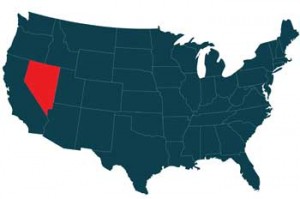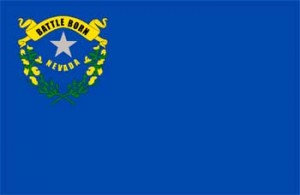Nevada Emergency Vehicle Light State Statutes
 Like anywhere else, Nevada has strict laws on who can have emergency vehicle lights and in what colors. When you purchase any type of LED lights for emergency use in Nevada, there are restrictions on colors that you can use to designate your vehicle. These laws also govern the fines and other consequences for those who add emergency lights to their vehicles when they do not have proper licensing or status.
Like anywhere else, Nevada has strict laws on who can have emergency vehicle lights and in what colors. When you purchase any type of LED lights for emergency use in Nevada, there are restrictions on colors that you can use to designate your vehicle. These laws also govern the fines and other consequences for those who add emergency lights to their vehicles when they do not have proper licensing or status.
Quick Breakdown of Light Designations for Emergency and Other
- City Police
- Sheriff
- State Trooper
- Fire Truck Lights
- Volunteer Fire Fighter
- Ambulance
- Tow Truck
- Construction Lights
- Utility Vehicles
- Pilot Vehicles
- Security Vehicles
These vehicles may all have different lights that look similar to one another, but they mean different things on the road to other drivers. Most people recognize police lights, but they may get confused between ambulance lights and a fire truck.
In addition, Nevada has certain laws on actions that you must take when seeing these different lights as a driver.
Nevada State Statute 484A.020
All traffic laws and emergency vehicle light restrictions are listed under Nevada State Statute 484A.020. It governs what kind of lights can be used by what vehicles and defines every type of vehicle on the road, as well as citations, arrests, violations, and other designations that drivers should be aware of before getting on the road.
Under this statute, first responders listed below may also break certain traffic laws when emergency lights are on. These lights grant permission to do so by the Nevada Department of Motor Vehicles. Some other vehicles are allowed to use warning lights under this statute as well.
Police Lights
This is probably the most common form of lights on the road. These police lights identify different types of police as well as actions that you should take as a driver. There are classifications within the police department for Nevada city police or local police, Sheriff department, and state troopers.
City Police
Under the statute, Nevada's city police are required to have red flashing and solid blue emergency lights according to section 480.3 of the Nevada statute. This means that police must have at least one light that is red and flashing when responding to an incident. The red light must be a forward-facing light, while the blue light can be placed in either the rear, front, or side of the vehicle.
Sheriff Lights
The Sheriff's department follows the same lighting guidelines as city police, however they can use alternating emergency lights as needed. The main difference between the city police and Sheriff's department is the vehicle and designation on the body of the vehicle, rather than the lights.
State Troopers
These vehicles are different than the police and Sheriff vehicles that respond to incidents in the city. While they may go to an incident within their area, their vehicles are only different in the markings on the vehicle. These vehicles have the same red and blue lights as other police vehicles.
Fire Truck Lights
The Nevada emergency light statute also specifies what types of lights can be used on fire fighter responder vehicles. The Nevada statute states that fire trucks must have at least one red flashing light. However, fire trucks are also allowed to use blue lighting, but this fire truck light must face the rear, side, or front of the vehicle.
Volunteer Fire Fighter Lights
Lighting for your vehicle is optional as a volunteer fire fighter. However, one red flashing light is allowed on your vehicle if you are a licensed volunteer.
Ambulance Emergency Lights
Ambulances have a difficult job of responding and transporting victims in an incident. They can have multiple red lights, but they are required to have at least one prominent red flashing light. They can also have blue lights so long as they face the rear, side, or front of the rig. Most ambulances only use red lights to avoid confusion.
Tow Truck Lights
 There aren't any specific laws in the Nevada statute that specify what warning lights to be used by tow trucks. However, the statute does talk about warning lights that can be used. If the tow truck is licensed, then they can add warning lights, which are typically yellow or white, as approved by the Nevada Department of Transportation.
There aren't any specific laws in the Nevada statute that specify what warning lights to be used by tow trucks. However, the statute does talk about warning lights that can be used. If the tow truck is licensed, then they can add warning lights, which are typically yellow or white, as approved by the Nevada Department of Transportation.
Construction Vehicle Lights
Like tow trucks, construction vehicles aren't really specified for a certain lighting category. However, they can use warning lights as well. These are typically white and yellow.
Utility Vehicles
Power trucks and other utility vehicles can also have warning strobe lights on their trucks that are white or yellow.
Pilot Vehicle
The state of Nevada specifies certain lighting that is required for pilot cars, which need amber lights. The Nevada Department of Transportation provides permits for those who are allowed to have the amber lights on their vehicles. You must be able to prove that you work with oversized vehicles and need amber lighting on your vehicle. The amber light should be mounted on top of your vehicle. You can use revolving or flashing lights. The light must also be visible for at least 500 feet.
Security Vehicles
For those who work in security and use a vehicle to monitor the safety of the parking areas or building, there are certain lights that are allowed to be placed on the vehicle as well. These include yellow and white lighting that does not resemble police lighting in any way. The lights can be flashing but can't ever appear to be a first responder or ambulance lighting. Security vehicles must also pass certain requirements in order to be legal. However, most of these vehicles are privately owned and operated, meaning that you may see different light placements.
Fines and Punishments for Using the Wrong Emergency Lights
The Nevada statute for emergency vehicle lights specifies that drivers and other vehicle operators can be fined for having the wrong lights, or even a cop siren on their cars. Impersonating a police car with red and blue lights carries the harshest fines if civilians place these lights on their vehicles. While anyone can buy an emergency light, placing it on a vehicle can carry heavy consequences.
For example, a civilian may be arrested for having a red light on their vehicle when they are not a police officer or first responder. They may be fined up to $5,000, 6 months in jail, or face community service, depending on the judge's ruling. However, some lights are allowed for off-road and private use. This means that on your own private property you may be allowed to use warning lights. However, you should still be careful to not impersonate a police car in the state of Nevada.
Quick Review of Emergency Lighting Laws in Nevada
If you need any kind of emergency or warning light in Nevada, then you should read through Nevada state statute 484A.020. This gives you a full breakdown on what you can and can't put on your car if you don't have the right permissions.
While permissions may allow you to add certain colored lights to your vehicles, you have to get your permit from the Nevada Department of Motor Vehicles before being able to place the lights on your car.
In addition, specific light colors designate what type of first responder is on the road. Out of all the emergency lights, the most important designation is police responders.
Here is a quick cheat sheet:
- Police: Flashing red light and revolving blue lights
- Fire trucks: One flashing red light and possible blue light
- Ambulance: One flashing red light and possible blue lights
- Pilot cars: One amber light, must have permit
- Utility trucks, tow trucks and construction: May use warning lights
For more information about what lights may be available to you, we suggest calling your State Highway Patrol office at: 775-687-5300
*Please note that these numbers are what we are currently able to find and the numbers may have changed since this listing.
Disclaimer: The emergency vehicle light state statute guide was created by Extreme Tactical Dynamics as a guide and reference. We make no claim to the accuracy or validity of this guide. This guide was written to the best of our knowledge and has been provided to our customers as a courtesy ONLY! The information in this guide is our interpretation of the law as we have read it. We cannot be held responsible for any errors as this is only our interpretation of the law and the laws are constantly changing. We cannot be held liable or responsible for any errors and recommend that our customers refer to their local authorities to confirm the particular statue that governs their use of emergency vehicle lights.
 Facebook
Twitter
Google+
Instagram
YouTube
Facebook
Twitter
Google+
Instagram
YouTube


